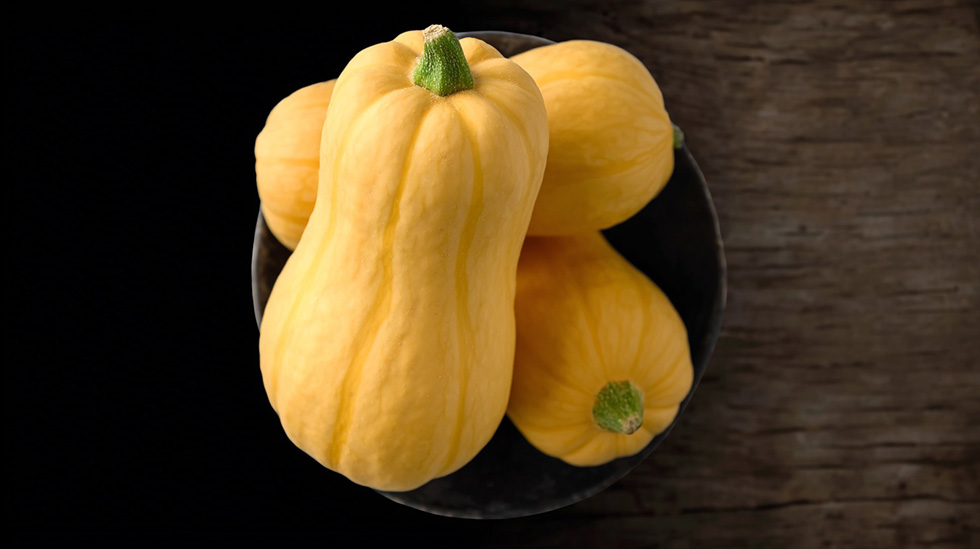Butternut squash – the orange prince of the kitchen
Whether you’re strolling through autumn leaves or standing in front of a market stall, the cheerful orange colour of pumpkins simply beckons. We’ve long loved this sweet, soft-fleshed pumpkin – not just in puree or cream soup, but also as a secret ingredient in cakes, side dishes and salads.

Butternut squashes are known by many names, sometimes as ‘winter squash’, but also including the famous Hokkaido pumpkin, a smaller, sweeter variety of its larger brother. The Latin name for butternut squash is Cucurbita moschata, which belongs to the pumpkin family.
It originated in Central and South America, where it has been cultivated for over 7000 years. It was brought to Europe in the age of the great discoveries and quickly became a favourite in local cuisines, especially in the autumn-winter months when other seasonal vegetables are less available.
Its importance in the kitchen: 4/5
No seasonal Hungarian cuisine should be without butternut squash. Although not used every day, it is a key ingredient in the autumn-winter period. It is a great ingredient in cream soups, cakes, stews and even pasta dishes, and it is healthy and nutritious.
Edible and non-edible parts of the plant
The fleshy inside of the pumpkin – that beautiful orange part – is the most edible part. You can eat it roasted, boiled, mashed or grilled. The seeds are also edible if you clean and roast them, and are particularly popular as a crunchy snack or sprinkled on salads.
The rind is not usually eaten, although the rind of Hokkaido pumpkins, for example, is still soft and edible after cooking. The stem, or stalk, is hard and tasteless – it’s not fit for the plate. Raw pumpkin is difficult to digest, so be sure to eat it after it has been heated.
Health benefits and nutritional content
Butternut squash is a vitamin bomb: it’s packed with vitamin A, which supports eye and skin health, and vitamin C, which helps the immune system. It is also high in fibre, which aids digestion.
It is traditionally used for constipation, but folk medicine also suggests it is useful for liver and bile problems. It’s also low in calories, so dieters can safely include it in their diet.
Production and season
The real pumpkin season runs from September to January. It grows well in Hungary too, mainly in the open countryside, in the Transdanubian region and in the Great Plain. Local growers usually start harvesting at the end of August and it can be kept in cool storage until February.
It is grown throughout Europe, with Italy, France, Germany and Poland being the main producing countries. Most imported products come from these countries. Hungarian pumpkins are most commonly found in shops from September to December, but from January onwards imports are often available.
How to choose a good quality butternut squash?
- Choose a bright orange-skinned specimen with no soft spots or cracks.
- It should weigh more than it looks – this indicates dense, mature meat.
- The stalk should be dry, not fresh – this shows that the pumpkin has ripened properly.
- Don’t choose too faded, greenish-skinned pieces, they may still be unripe.
Storage tips
- It will keep whole, in a cool, dark place for up to 2-3 months.
- When cut, however, it can only be kept for a few days in an airtight container in the refrigerator.
- You can also puree and freeze it – so it’s always handy for pumpkin cream soup or cookies.
Butternut squashes in the kitchens of the world
One of the best-known pumpkin-based dishes in American cuisine is pumpkin pie. In India it is used in curries, while in Japan it is known as tempura. In Italy, it is used in pumpkin gnocchi or risotto, while in our country it is mostly eaten roasted or as a soup.
An iconic recipe: pumpkin cream soup
Ingredients:
- 1 kg butternut squash
- 1 head of onion
- 2 cloves garlic
- 1 dl cooking cream
- 1 tablespoon butter or oil
- salt, pepper, nutmeg to taste
Preparation: peel and dice the pumpkin, fry it with the onion and add water. When soft, puree with a hand blender, add cream, season and you have a heavenly autumn soup! 🎃
Kitchen tips and spices
Butternut squash is a versatile ingredient that goes well with both sweet and savoury dishes. If you’re making it sweet, it can go with it:
- cinnamon
- nutmeg
- ginger
- vanilla
In savoury dishes it harmonises well with:
- rosemary
- thyme
- garlic
- curry powder
Avoid overly intense, astringent spices like bay leaf or marjoram – they can overpower the pumpkin’s smooth flavour.
And don’t forget: pumpkin is not only delicious, it also brings colour and cheer to your plate! 🌞
